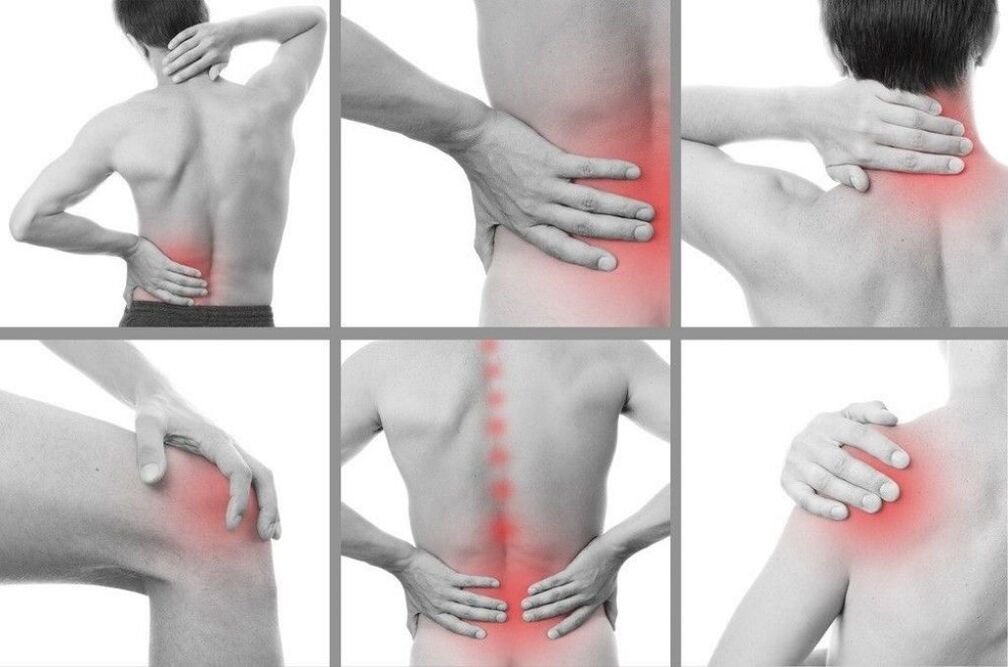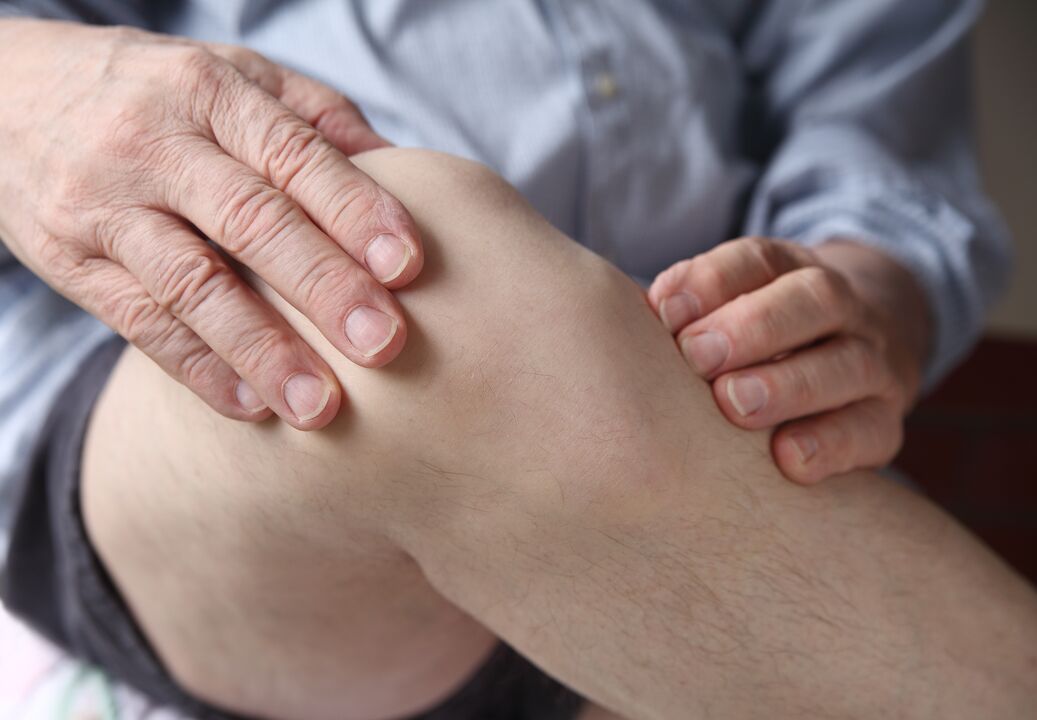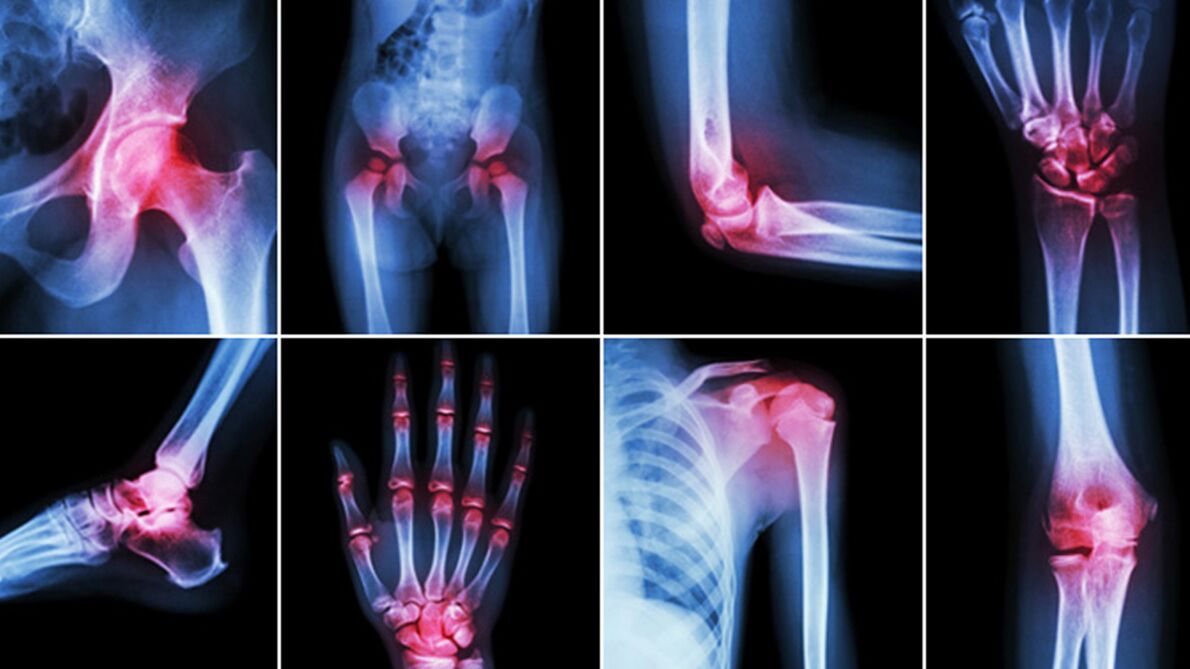Joint pain throughout the body is not a disease but a symptom. At the same time, the painful sensations often spread to the muscles, making it difficult to even get out of bed. Many diseases lead to such unpleasant consequences, the treatment of pain is impossible without determining the exact cause. What symptoms should we focus on and what should we do?
The main causes of pain
If more than one joint hurts, not many, but all at once, this is a sign of systemic damage to the body. In addition, it is difficult to understand exactly where the pain is located - in the joints, muscles, bones or everywhere at the same time. The pain is felt throughout the body, making it difficult to locate. Because it can damage all joints:
- Excessive physical activity.
- Infectious diseases.
- Pathological changes in connective tissues.
- Diseases of the circulatory system.
- Oncological diseases.
- Neuralgia.
As can be seen from the above, it is impossible to immediately understand the causes of pain. The exact cause can only be ascertained after passing the appropriate examinations. Excluding hard physical work the day before, we are talking about diseases that need to be treated.

Because it is dangerous
First of all, severe pain throughout the body reduces mobility, but this is not the main danger. The main threat is the disease, which caused painful sensations in the joints. Self-medication in such cases is extremely dangerous, as it will lead to the fact that only the symptoms will pass, while the disease itself will progress. You can try to relieve the pain and possible swelling on your own, but after that you should definitely consult a doctor.
Symptoms of the disease
Every disease has symptoms that are unique to it. Since pain is the most noticeable sign, the first thing you need to do is determine its characteristics:
- Type of pain (pain, acute, cramps).
- Localization (joints, surrounding muscles, bones).
- Either it moves inside the body, or a separate area hurts constantly.
- Constant pain or seizures are intermittent.
- The intensity of the senses.

In addition, the patient may feel weakness, severe fatigue or muscle aches. Further symptoms vary depending on the specific cause of the pain:
- Hypertension. . . Excessive physical activity the day before can lead to the fact that the next day the whole body will ache. This is due to the production of lactic acid, which accumulates in the muscles. In this case, a good warm-up is enough to relieve the pain.
- Infections. . . Joint pain often accompanies illnesses such as the flu, fever, meningitis, and even common acute respiratory infections in advanced form. In addition to pain, the symptom is complemented by cough, skin rash, chills, weakness, nausea and indigestion, high body temperature.
- Viral hepatitis. . . With liver damage, in addition to possible pain, there is yellowing of the skin and whites of the eyes, worsening of appetite.
- Pathological changes in the connective tissue. . . Arthritis, lupus erythematosus, polymyositis - all of these can cause joint pain. In addition, certain diseases of the heart, kidneys, lungs, vascular and nervous systems can also lead to painful sensations in the joints.
- Blood diseases. . . In addition to the sensation of pain in the body, the patient experiences fever, the skin becomes pale, the lymph nodes, liver and spleen increase in size. In this condition, the susceptibility to infectious diseases increases. In acute form, such diseases are life threatening if not treated in time.
- Oncology. . . With oncological tissue damage, joint pain may appear earlier than the disease itself is diagnosed. In addition, symptoms such as weakness, weight loss, poor appetite, fever, mood swings, depression speak of oncology.
- Neuralgia. . . With diseases of the nervous system, in addition to pain in the joints and muscles, the patient may experience numbness in the fingertips, loss of sensitivity and weakness. In addition, the hair begins to fall out and the skin becomes drier and thinner.
If joint pain is accompanied by any of the listed symptoms, this is a reason to consult a specialist.
Diagnostic methods
Who to contact with pain complaints all over the body:
- Rheumatologist.
- Hematologist.
- Oncologist.
- Infectious.
After the doctor examines the patient and hears the complaints, he should send the patient for examination. The following diagnostic methods are used to determine the diagnosis:
- General urine analysis.
- General blood test.
- Blood biochemistry.
- Blood and LHC smear analysis.
- Bone marrow puncture.
- Computed tomography and magnetic resonance imaging.
- Neuromyography.
A comprehensive examination will give a complete picture of the patient's condition. Only then can we talk about a specific disease and prescribe treatment.

Treatment of joint pain
The method of treatment is chosen by the doctor depending on the data obtained during the examination. The most common is drug therapy. A wide range of medications can cure almost any cause of joint pain. The choice of drug groups depends on the type of disease:
- Antibiotics
- Anti-inflammatory drugs.
- Painkillers.
- Hormonal factors.
- Immunosuppressants
- Cytostatics.
Many drugs from the mentioned groups have serious contraindications - some of them should not be taken in the presence of tumors. In addition, almost all drugs have their own contraindications and side effects. This is one of the reasons why it is impossible to choose independent drugs and take them without thinking. The exact dosage and type of medicine is only prescribed by a doctor. If after the course of administration there are no results, the specialist can replace the drug with another.

Surgery is required in extreme cases when drug treatment is ineffective. Usually, surgery is prescribed for tumors and blood diseases. In case of cancer, the operation can be supplemented with radiotherapy and in case of serious blood diseases, a bone marrow transplant is required.
Prophylaxis
To avoid aching your joints, you should follow six simple recommendations:
- Proper nutrition. . . First, a balanced menu will give the body all the substances necessary for normal functioning. Second, a good diet will help you maintain your weight. Obesity is known to be one of the causes of joint pain.
- Chondroitin and glucosamine. . . These substances are essential for the health of the joints. They are found in meat, cartilage and fish.
- Alcohol consumption education. . . The fluid helps to establish the metabolism, if there is not enough water in the body, the nutrition of the organs, muscles and joints will be inadequate. You should drink about 2 liters of water a day.
- Physical activity. . . Even regular exercise in the morning will help normalize blood circulation, so the joints receive enough nutrients.
- Caution. . . Any injury to the joint should be avoided.
- Vitamin complexes and dietary supplements. . . Missing vitamins and minerals can be obtained from preparations, the main thing is to choose them correctly.
Simple tips can help you keep your joints healthy. In addition to adjusting the diet and daily routine, it is necessary to periodically undergo preventive examinations by doctors. This will help you spot the disease in time and start treatment.


















































